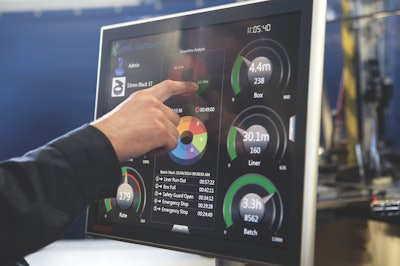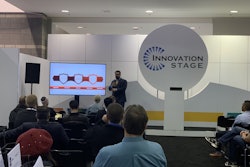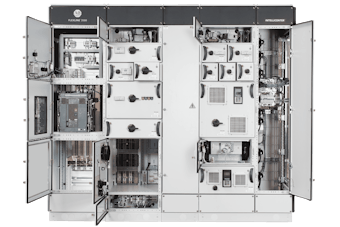
Contributed by Joe Martin, Packaging Market Manager, Beckhoff Automation
Continuous expansion is part of any healthy business, and for packaging operations, this often means exploring and sometimes creating new markets that are ready for growth. Whether breaking into a different geographical market or new product market, expansions always present new challenges. There are different standards, new technologies—including the Internet of Things (IoT) and Industry 4.0 concepts—and additional expectations from consumers. As a result, adapting to new markets can be difficult for manufacturers and OEMs locked into legacy systems with black box controllers and outdated industrial components.
Of all the challenges packaging professionals have to face, automation and controls systems should not be one of them. Open solutions, like PC-based control, that adhere to common industry standards can help packaging operations meet the demands of new and changing markets. And, by adding an interoperable network, such as EtherCAT, an Ethernet-based fieldbus system developed by Beckhoff Automation, engineers can design new machinery or retrofit existing systems for maximum flexibility, scalability and longevity. Although industry-specific components vary, the core automation and controls technologies in an open architecture will continue to offer a universal platform for new ventures regardless of the industry or application type.
When it comes to adopting flexible control technology, some in the packaging industry have looked at new suppliers with skepticism. This is typically because packaging plants have been using the same automation suppliers for decades. But the limitations of legacy systems are numerous, and are most pronounced in the lack of scalability in the controller hardware, network and software. Traditional PLC hardware, software and networking platforms from the same vendor are too frequently difficult to migrate into and out of. But, someday, PLC migration will be required, whether the machine builder or manufacturer decides they need to upgrade technology, or if the vendor pushes certain products into obsolescence.
Open PC-based control solutions, on the other hand, have continued to prove their performance and reliability in the field. Some suppliers allow complete scalability in hardware, software and networking—ensuring the same standards apply from the simplest entry-level controller, up to the highest performance automation device in the portfolio. Considering rapid changes in the industry, these are the best options to ensure packaging operations remain competitive in current markets as well as in new ones.
Packaging operations must evolve
Technology will play an important role in packaging as a result of changing consumer requirements. The market demands much higher product variety and customization, which requires faster changeovers, greater packaging material variety and overall improvements in machine flexibility, throughput and efficiency. In addition, cloud connectivity plays a larger role today, especially in the track and trace of food, beverage and pharmaceuticals. Lacking the necessary hardware and software integration, legacy systems struggle to supply the required data and processing flexibility because they haven’t developed within the convergence of operations technology (OT) and IT, as PC-based control has. This technology convergence ties right into Industry 4.0, which is characterized by highly automated production that remains flexible and customizable down to lot size one, with changeovers happening on-the-fly.
One area where these changes are obvious is in contract packaging. Lower lot sizes and frequently changing jobs lead to even more changeovers, which must be completed quickly to meet the necessary throughput. For example, one client might need to box 12 units of a product vertically and then box 48 units horizontally, completing both tasks back to back. This leaves the contract packager very little time to make physical adjustments to machines or change control logic for each part type and package quantity coming down the line. But it’s not only contract packagers that need to manage rapid changeovers; even large-scale operations need machines with the capability to efficiently reconfigure themselves based on a unit’s production order, lot, recipe and part numbers.
Don’t forget the industrial networks
Whether defined by geography or product category, every market has technology standards, including for networks. By implementing open network technology in all factories, packaging companies ensure that their systems can communicate across global, multi-site operations while connecting to local, application-specific fieldbuses or industrial Ethernet platforms. For example, the EtherCAT protocol provides multi-fieldbus support, connecting directly to legacy devices with older fieldbuses, such as DeviceNet, PROFIBUS, CANopen and SERCOS. All data from these connected networks can be transmitted over the main EtherCAT network, connected by standard Ethernet cables. In addition, the technology is ready for gigabit communication and Time-Sensitive Networking (TSN), making these advances functional extensions, not replacements, of EtherCAT. This ensures that EtherCAT can adapt to the requirements of current and emerging markets today and into the future, despite major differences in machinery or product types.
EtherCAT also incorporates hot connect capability, distributed clocks and built-in diagnostics, among other features, that support rapid product changeovers. This promotes efficient production of numerous recipes and projects across interchangeable machine modules in a line.
PC-based control for machine automation and IoT
More packaging machine builders and users are learning that PC-based controllers provide a unified platform for machine control logic and cloud connectivity. Unlike PLCs, Industrial PCs (IPCs) are designed to communicate with devices from all generations and manufacturers, so they are optimal for feedback and upstream reporting, even up to cloud-based systems.
Modern IPCs boast processing power to keep up with complex manufacturing requirements, spanning single-core, 400 MHz ARM Cortex-M7 processors to Intel Xeon processors with four, eight, 12 or 20 cores—enabling up to 40-core cabinet-mount IPCs. Even an entry-level IPC can easily handle a packaging machine’s PLC, multi-axis motion control, HMI and more on a single hardware device. With memory options that go up to the terabyte range, IPCs offer ample storage capacity for all automation projects, recipes, vision system data and more. In addition, these PC-based controllers can run any additional software that operates in a Windows environment, so companies can add their own proprietary software, custom libraries, data acquisition programs and other tools with ease.
PC-based automation software also promotes system openness by consolidating the programming for PLC, motion control, simulation and other functionality into one engineering environment. By adding Microsoft Visual Studio to the environment, numerous programming languages are ready to use, from ladder logic and structured text to C++ or even HTML5 for HMI.
Open automation software also provides the optimal platform for edge and cloud computing. The IoT software runs on the same PC-based controller that performs data acquisition and supports communication via MQTT, AMQP or OPC UA, among other standard protocols. This enables immediate data transfer to any cloud service, whether it’s Amazon Web Services (AWS), Microsoft Azure or others. Available analytics frameworks allow PC-based control software to perform advanced algorithms that monitor machine health, schedule maintenance or compare performance across lines and even multi-site operations. When breaking into new markets, making sense of Big Data provides crucial insights and helps keep machines operating reliably at peak levels.
New technologies for new markets
Expanding into a new market without understanding and implementing the new technologies that are changing the packaging industry is ill-advised. Unfortunately, some in the industry see any platform shift simply as a risk rather than an opportunity to outperform the competition. Sometimes there is a fear that using anything different from what they have used in the past will set a business up for failure.
With packaging operations needing to expand and meet today’s demands, engineers and upper-level management need to create paradigm shifts and embrace technological innovations much sooner. The real risk is not moving forward with open solutions that enable innovation and flexibility for years to come. Because most open solutions adapt to potentially unforeseen changes, these options for networking, control hardware and automation software do not pose the risk of being boxed in or left behind like traditional platforms. They also offer more opportunities to answer the needs of new markets.



















